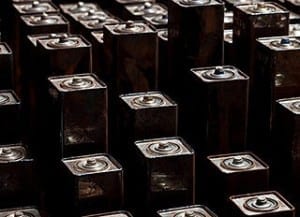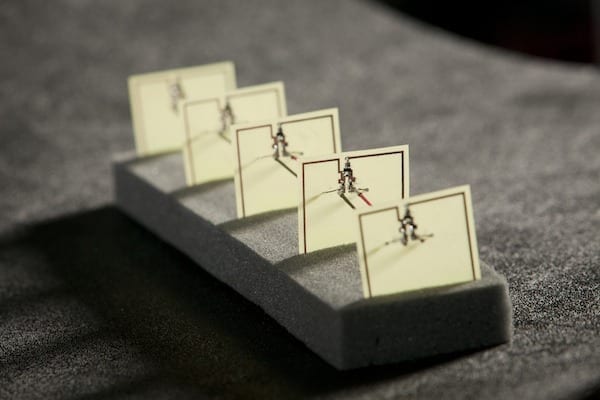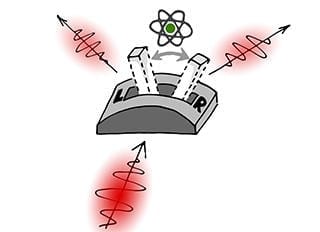
“This technology could give customers control over what they want to do and when”
It’s a thrifty trick used by households from L.A. to Luxembourg, or anywhere where utilities charge less for electricity during off-peak hours. You load the washer and drier during the day and turn it on before you go to bed, when cheap power kicks in.
But what if you could take the scheme to the next-level, store off-peak electrons in a powerful battery and use them to power your home during the day, when price per kilowatt-hour hits the roof?
“This technology could give customers control over what they want to do and when,” Chris Todd, an engineer with Princeton Power Systems (PPS). “It could also help utilities balance demand and shave peak electricity loads during the day.”
Such systems are now coming to light. Todd was part of a team that just linked Princeton Power’s advanced power management technology to GE’s next-generation Durathon batteries at L.A.’s Discovery Science Center in Santa Ana, Calif. The system will help the non-profit shift between 10 to 20 percent of its daily electricity demand from peak rates to less expensive off-peak power. It will also serve as backup during power outages. “This type of project can demonstrate that battery-based load-shifting technology is a viable tool for customers to respond to demand and permanently shift a significant percentage of daily electrical loads to non-critical hours,” says Prescott Logan, general manager at GE Energy Storage.
PPS makes the technology that “inverts” direct current stored in the batteries to alternating current needed in the sockets, and vice versa. The system uses data gathered from the science center’s smart meters and other sensors and feeds it into a set of algorithms to determine the most economical time for battery discharge and recharge. “The algorithms are gathering real time data about what’s happening in the building,” Todd says.
The Durathon batteries at the center can store 500 kilowatt hours, enough to reduce its electricity bill and keep the lights on for several hours when power goes out.
The project is part of California’s Permanent Load Shift program, a statewide effort to reduce peak demand on the California electrical grid. The joint Princeton Power and Durathon design won Southern California Edison’s request for a cost-effective solution to shifting the center’s power load.
Go deeper with Bing News on:
Load-shifting technology
- 7 Google Docs keyboard shortcuts to get more done in less time
Hitting Ctrl + H brings up the "Find and replace" menu in Google Docs, which allows you to tell Google to replace all instances of a word with something else. You can also tweak options like case ...
- ShrutiSalunkhe Leads the Way in User-Centric VR and AR Design Innovation
ShrutiSalunkhe Leads the Way in User-Centric VR and AR Design Innovation.Illinois, USA - April 27, 2024 — Amidst the current state of ...
- Shifting Office Trends Could Influence Site Selection Decisions
The uncertain impact of AI hangs like a cloud over the whole picture. The report considers it a threat because some firms intend to supplement existing staff with AI instead of new employees. However, ...
- Revolutionizing Light Electric Vehicle Mobility: The Story and Innovations of Veer’s Shift Drive System
Veer, led by its Founder Sean Hacking, emerged from a pivotal moment when a cycling mishap ignited a mission to revolutionize alternative transportation. Hacking’s passion for cycling collided with ...
- The Importance of Technology in Modern Logistics: Enhancing Efficiency and Transparency
The logistics sector has undergone a transformative shift with the advent of sophisticated technologies that streamline operations, enhance real-time tracking, and fortify supply chain management. The ...
Go deeper with Google Headlines on:
Load-shifting technology
[google_news title=”” keyword=”Load-shifting technology” num_posts=”5″ blurb_length=”0″ show_thumb=”left”]
Go deeper with Bing News on:
Peak demand
- Drop in fuel demand and oil prices sends gas prices lower: AAA
The national average cost for a gallon of gas declined to $3.65, a slight two-cent decrease from the previous week. Gas demand fell from 8.66 to 8.42 million barrels per day last week and oil prices ...
- Biden Rules on Fossil Fuel Plants Collide with Power Demand
A new regulation will force coal plants to capture nearly all of their CO2 emissions - or close - by 2039, with similar pollution cuts for many of the new gas-fired plants built to replace them.
- Through Aramco, Peak China courts Peak Oil
Exchanges between China and Arab states stretch back centuries along the ancient Silk Road. More recently, Saudi Aramco is doubling down in the People’s Republic, making energy investments in the ...
- Watch out, time of use and peak demand billing have some serious pitfalls
The days of meter readers trundling into Canberra backyards and manually recording energy use are rapidly coming to an ...
- Biden Curbs on Power Plant Pollution Collide With Demand
The Biden administration is cracking down on planet-warming pollution from the nation’s electricity sector, with mandates likely to encourage the closure of coal plants that advocates argue are vital ...
Go deeper with Google Headlines on:
Peak demand
[google_news title=”” keyword=”peak demand” num_posts=”5″ blurb_length=”0″ show_thumb=”left”]










